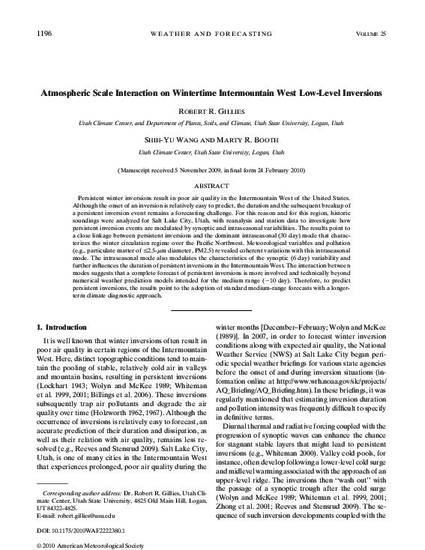
Persistent winter inversions result in poor air quality in the Intermountain West of the United States. Although the onset of an inversion is relatively easy to predict, the duration and the subsequent breakup of a persistent inversion event remains a forecasting challenge. For this reason and for this region, historic soundings were analyzed for Salt Lake City, Utah, with reanalysis and station data to investigate how persistent inversion events are modulated by synoptic and intraseasonal variabilities. The results point to a close linkage between persistent inversions and the dominant intraseasonal (30 day) mode that characterizes the winter circulation regime over the Pacific Northwest. Meteorological variables and pollution (e.g., particulate matter of #2.5-mm diameter, PM2.5) revealed coherent variations with this intraseasonal mode. The intraseasonal mode also modulates the characteristics of the synoptic (6 day) variability and further influences the duration of persistent inversions in the Intermountain West. The interaction between modes suggests that a complete forecast of persistent inversions is more involved and technically beyond numerical weather prediction models intended for the medium range (;10 day). Therefore, to predict persistent inversions, the results point to the adoption of standard medium-range forecasts with a longer-term climate diagnostic approach.
